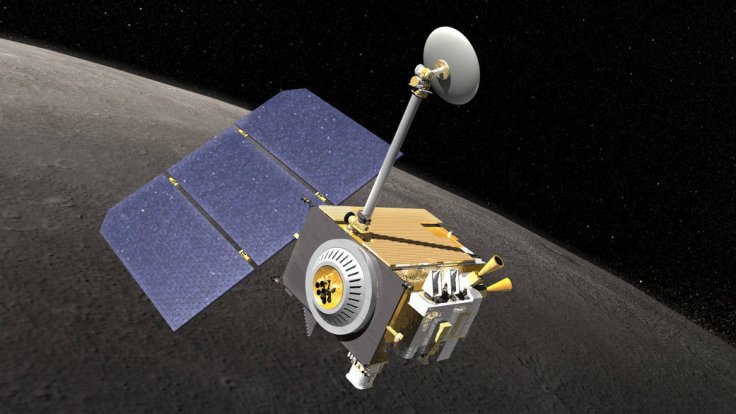NASA' Lunar Reconnaissance Orbiter (LRO), which is currently orbiting moon, has detected water molecules moving around the dayside of earth's natural satellite. This finding may help the American agency, as they are plans to put astronauts back on the lunar surface.
Lyman Alpha Mapping Project (LAMP), a far-ultraviolet (FUV) imaging spectrograph, has measured sparse layer of molecules temporarily stuck to the Moon's surface. The new study, published in Geophysical Research Letters, suggested that the detection of the molecules helped to characterise lunar hydration changes over the course of a day.
John Keller, LRO deputy project scientist from NASA's Goddard Space Flight Centre in Maryland said, "The study is an important step in advancing the water story on the Moon and is a result of years of accumulated data from the LRO mission."
Until the last decade, scientists used to believe that moon was dry with any water existing mainly as pockets of ice in permanently shaded craters near both poles. But recently the scientist found the evidence of surface water in sparse populations of molecules bound to the regolith.
But the study suggested that the location and the quantity of the water may vary based on the time of day. Scientists believe that the lunar water is common at the higher latitudes and it tends to hop around due to the hot temperature of the surface.
Scientists had hypothesised that hydrogen ions may be the reason behind the existence of water on the lunar surface and as a result, when moon passes behind earth, while creating a shield from solar wind, the "water spigot" should essentially turn off.
But, depending on the recent findings by LAMP, scientists said that the water on lunar surface doesn't decrease when moon is shielded by earth and the region influenced by the magnetic field helps the water to build up over the time.
Lead author of this historic study Amanda Hendrix, a senior scientist at the Planetary Science Institute said, "These results aid in understanding the lunar water cycle and will ultimately help us learn about the accessibility of water that can be used by humans in future missions to the Moon."
"Lunar water can potentially be used by humans to make fuel or to use for radiation shielding or thermal management; if these materials do not need to be launched from Earth, that makes these future missions more affordable," she further added.









